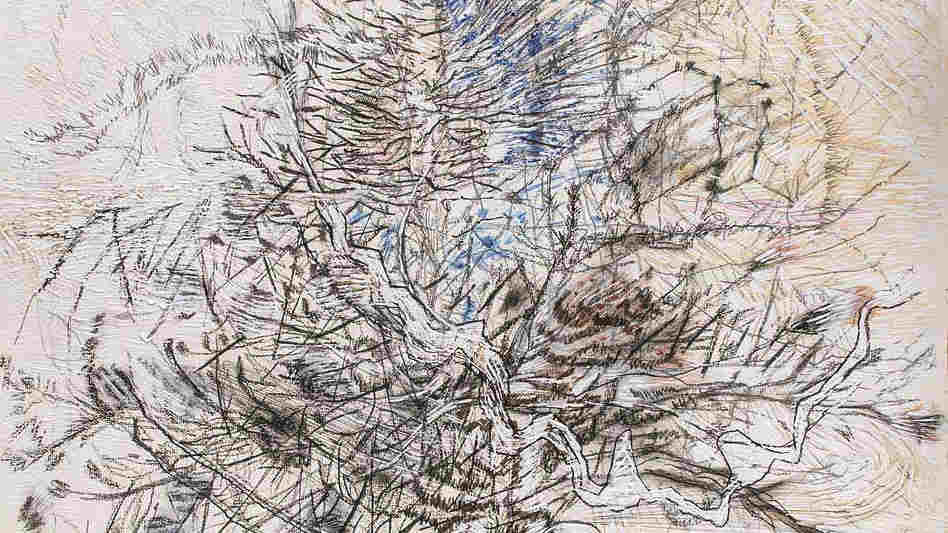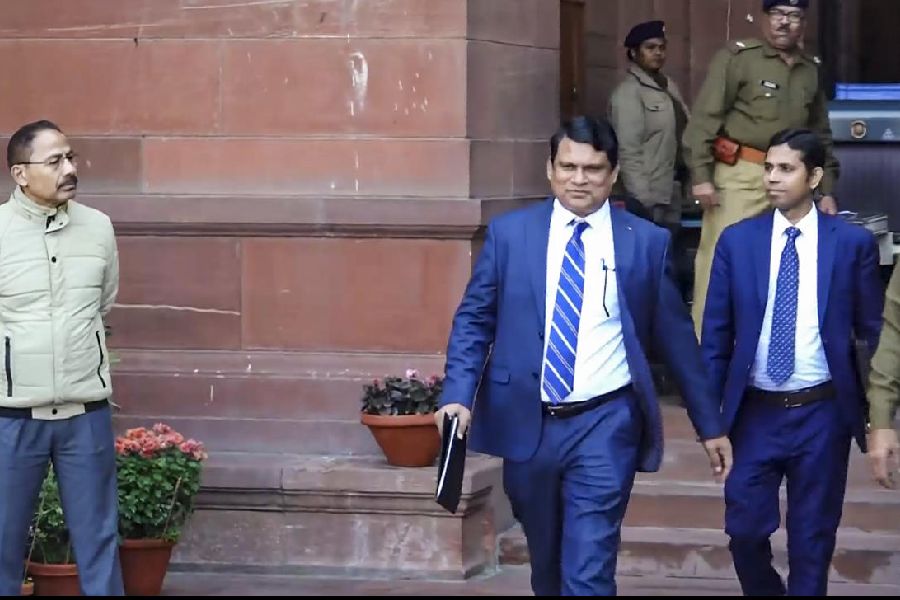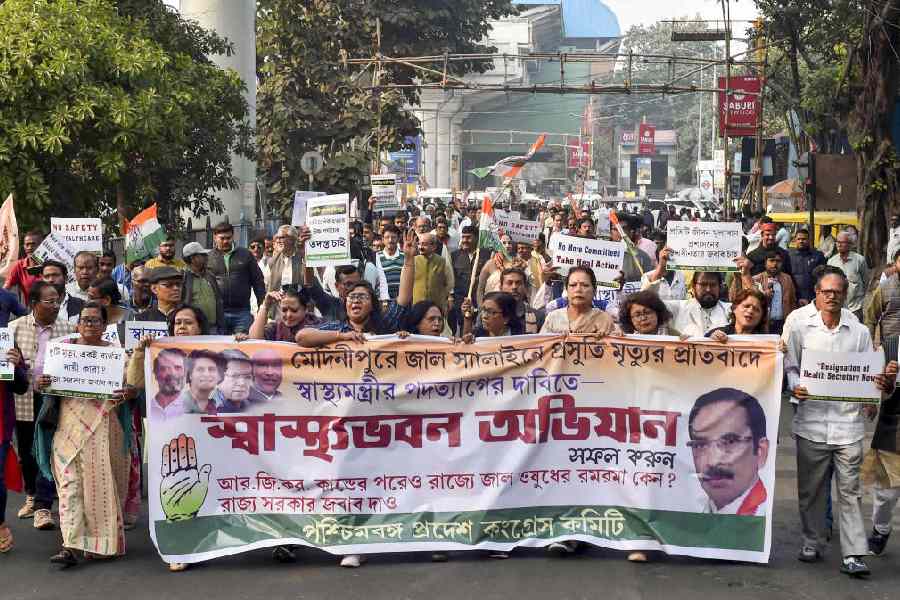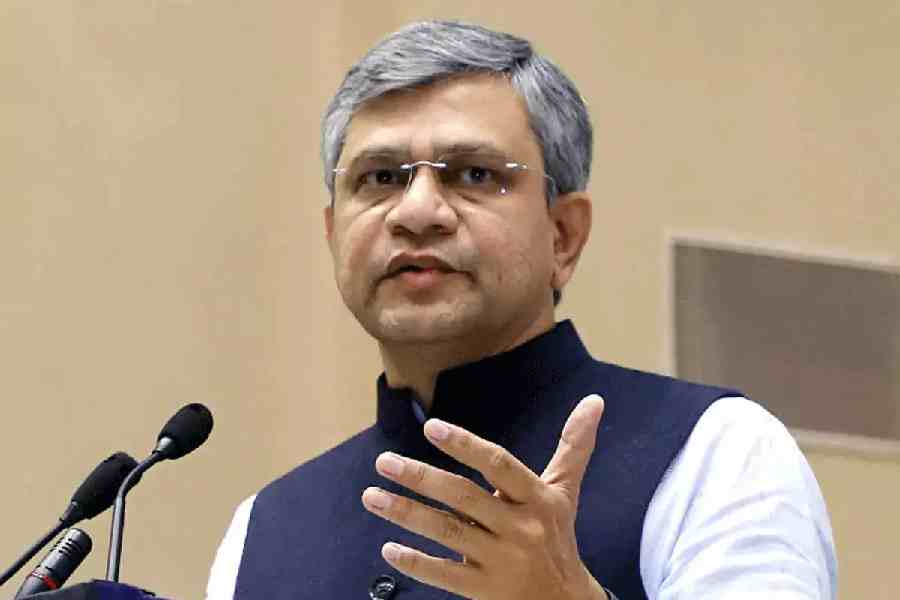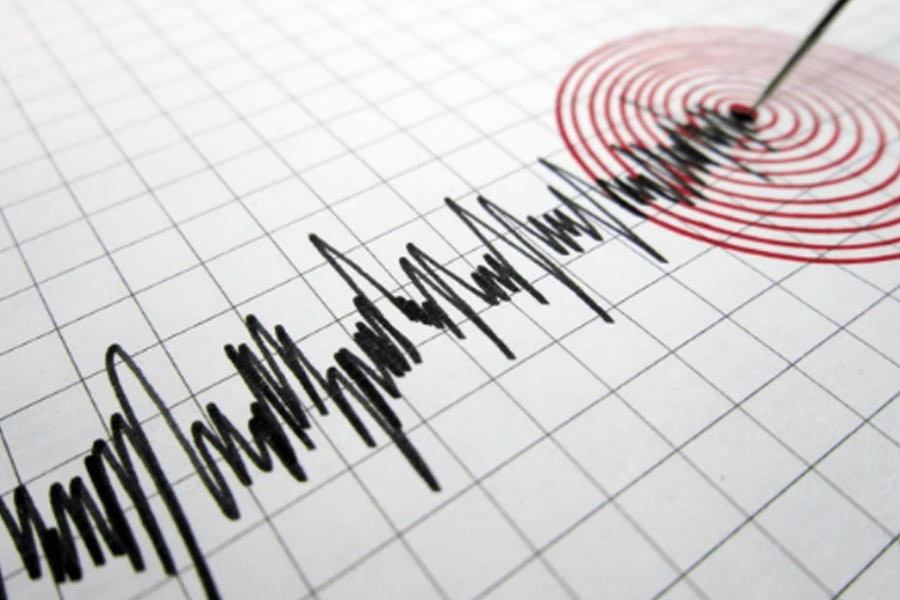The thickets in Jayashree Chakravarty’s paintings trap your gaze the way underbrush in a forest would your feet. An intricate web of paint, pencil, ink, charcoal and tea stains, along with odds and ends, a scatter of lines and inchoate images caught in them, build up a tangled ground that compels a closer, lingering, probing look in the online show, Works on Paper by Jayashree Chakravarty, that Akar Prakar hosted with Saffronart recently. To determine if her works celebrate the resilience of Nature; mourn the passing of the Romantic idyll of pretty landscapes; or raise an alarm that the poetry of earth, throttled as it is, can turn shrilly ominous in an ashen, lacerated, angry terrain.
This is a terrain that doesn’t seduce you with conventional charms. Rather, it inspires an unsettling awe. Because this is where Wild Grass is caught in a nervous agitation, its drying, dying roots pulled out, feathery seed pods and tiny leaves flying about in a blur of quick, light strokes and lines, as dark fumes hang limply from the sky. Where fragrant blossoms no longer grow as only a Thorny Flower (picture) can claw its way upwards with its shrivelled roots, brittle twigs, anarchic leaves and shivering tendrils: this unforgiving landscape appears to be something of a damning testament of human progress.
In the first of the artist’s two Untitled works — measuring 34.75 X 60.5 inches — you encounter a theatre of messy, even menacing conflict. A tumult of dry browns and greys lays siege to small houses, steeples, railings, drawn in lines and bereft of substance, as though these were mirages that would soon evaporate as a vengeful earth closes in to wrest back what had been encroached upon by human expansion. An uprooted plant looms in the foreground over the land as though it were a nemesis, as whiplash lines in white swirl about with a driven energy. The second Untitled work, 40 X 87 inches, seems to be completing the assault begun by the first. The earth has been turned up, the topsoil has bled into unchecked mudflows, miring the debris of fallen structures you can’t quite make out, exposing slow, little creatures like beetles.
It wouldn’t be inaccurate to propose that Chakravarty’s art isn’t so much about imagery as about the cacophonous wreckage that the jostle of medium and material brings to the surface. For years she has invested her enquiry and energy in surfaces merging ground and image, as the hand-crafted paper she prefers to work on — sometimes as massive scrolls — has clasped in its pasted layers fragments of paint to evoke teasing palimpsests which, like memory, are captivating in their elusive references.
In recent times, her engagement with her material seems to have deepened into a raw Action Painting immediacy that enriches the works with a dense, dynamic tactility. It figures: her close encounter with Nature happened through childhood explorations of forests in Tripura. Seeds, dried and fresh leaves, creepers, rotting fibre inhabit surface after surface as the paper is pasted on in 10 to 15 layers. This makes her art a gesture of preservation as well, of remembrance, akin to withered leaves or petals being tucked inside diaries, marking a personal symbolism of not letting go, resisting the inevitable.
Her accent on greys and wintry browns brings to the series an elegiac refrain. At the same time, through the tussle between tenacious growth and bristly decay, there’s the hint of renewal. Because she senses that Nature’s Palpable Connectedness — a work in which straggly seed pods float to the ground through knotted tendrils — can indeed generate the new life of a flowering plant Growing Out of Nothing.

